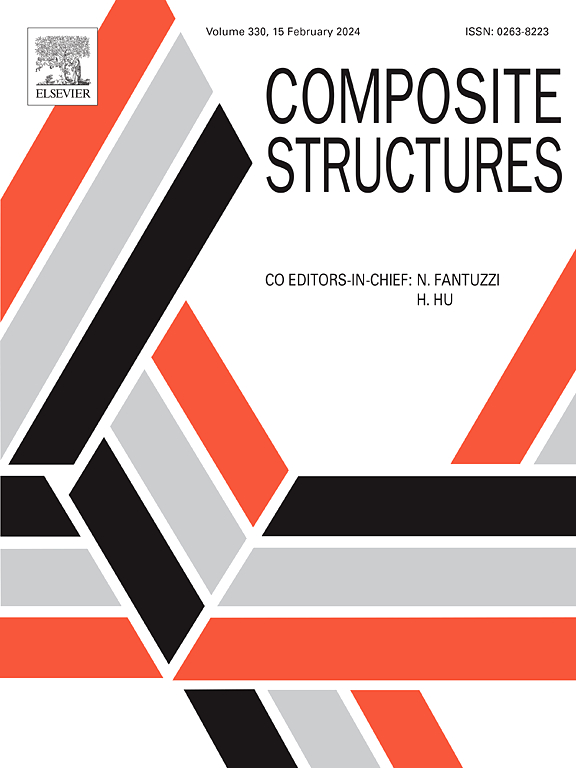Investigation into the quasi-static/dynamic combined shear-compression behaviors of three honeycomb like structures
IF 6.3
2区 材料科学
Q1 MATERIALS SCIENCE, COMPOSITES
引用次数: 0
Abstract
To provide a refined guide for the design and application of optimal crystalline cellular structures (OCCS), an in-depth investigation into the quasi-static and dynamic combined shear-compression behaviors of single-layer (Hp-structure) and double-layer (Hc-structure and T-structure) OCCS with varying relative densities (ρr) has been undertaken. First, the three structures of AlSi10Mg with a ρr of 25.84 % are manufactured via 3D printing. Then, a battery of quasi-static and dynamic pure compression tests is executed to elucidate the mechanical responses of these structures. Finally, a numerical study is used for exploring the influence of ρr on their quasi-static/dynamic combined shear-compression behaviors. The quasi-static/dynamic pure compression results show that, for different compression parameters (σpk,σpl, σm, EA, SEA), the optimal structural representatives (Hp-structure, Hc-structure, or T-structure) in different ρr ranges are identified. The dynamic compression deformation mechanisms and theoretical analyses of Hc-structure and T-structure are proposed. As shear angle increases, the shear-compression performance of Hp-structure significantly decreases, while those of Hc-structure and T-structure gradually decrease. Fitted quasi-static/dynamic initial yield envelopes are used to provide design criteria for OCCS.
对三种蜂窝状结构的准静态/动态剪切-压缩组合行为的研究
为了给最佳晶体蜂窝结构(OCCS)的设计和应用提供精细指导,我们深入研究了具有不同相对密度(ρr)的单层(Hp-结构)和双层(Hc-结构和 T-结构)OCCS 的准静态和动态组合剪切压缩行为。首先,通过三维打印制造出三种ρr 为 25.84 % 的 AlSi10Mg 结构。然后,执行一系列准静态和动态纯压缩测试,以阐明这些结构的机械响应。最后,通过数值研究探索了ρr对准静态/动态剪切-压缩组合行为的影响。准静态/动态纯压缩结果表明,对于不同的压缩参数(σpk,σpl, σm,EA,SEA),在不同的ρr范围内可以确定最佳的结构代表(Hp结构、Hc结构或T结构)。提出了 Hc 结构和 T 结构的动态压缩变形机制和理论分析。随着剪切角的增大,Hp 结构的剪切压缩性能显著下降,而 Hc 结构和 T 结构的剪切压缩性能则逐渐下降。拟合的准静力/动力初始屈服包络线用于提供 OCCS 的设计标准。
本文章由计算机程序翻译,如有差异,请以英文原文为准。
求助全文
约1分钟内获得全文
求助全文
来源期刊

Composite Structures
工程技术-材料科学:复合
CiteScore
12.00
自引率
12.70%
发文量
1246
审稿时长
78 days
期刊介绍:
The past few decades have seen outstanding advances in the use of composite materials in structural applications. There can be little doubt that, within engineering circles, composites have revolutionised traditional design concepts and made possible an unparalleled range of new and exciting possibilities as viable materials for construction. Composite Structures, an International Journal, disseminates knowledge between users, manufacturers, designers and researchers involved in structures or structural components manufactured using composite materials.
The journal publishes papers which contribute to knowledge in the use of composite materials in engineering structures. Papers deal with design, research and development studies, experimental investigations, theoretical analysis and fabrication techniques relevant to the application of composites in load-bearing components for assemblies, ranging from individual components such as plates and shells to complete composite structures.
 求助内容:
求助内容: 应助结果提醒方式:
应助结果提醒方式:


